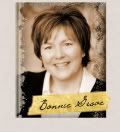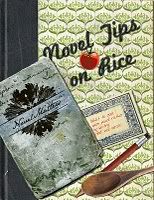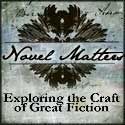 Literature is art. It is art after its own kind, just as painting is not sculpting, and music is not dancing, but each form contains at least a few elements of the other kinds of art in its composition, literature borrows elements from other art forms and folds them into useful writing practice. In this way, literature is visual art. The ways the words are arranged on the page are as much a part of the story as the characters, setting, and themes. And so we borrow the lessons of art, we borrow white space.
Literature is art. It is art after its own kind, just as painting is not sculpting, and music is not dancing, but each form contains at least a few elements of the other kinds of art in its composition, literature borrows elements from other art forms and folds them into useful writing practice. In this way, literature is visual art. The ways the words are arranged on the page are as much a part of the story as the characters, setting, and themes. And so we borrow the lessons of art, we borrow white space.
White space is exactly what you think it is, the empty space around the words on a page, more specifically the space between paragraphs.
We are used to applying and understanding white space in poetry.
Poetry, by Marianne Moore
I,
too, dislike it: there are things that are important beyond all this fiddle.
Reading it, however, with a perfect contempt
for it, one discovers in
it after all, a place for the genuine.
Hands that can grasp, eyes
that can dilate, hair that can rise
if it must, these things are
important not because a
high-sounding
interpretation can be put upon them but because they are
useful. When they become so derivative as to
become unintelligible,
the same thing may be said for all of us,
that we
do not admire what
we cannot understand: the bat
holding on upside down or in quest of
something to
eat,
elephants pushing, a wild horse taking a roll, a tireless wolf under
a tree, the immovable critic twitching his
skin like a horse that feels
a flea, the base-
ball fan, the statistician--
nor is it valid
to discriminate against 'business
documents and
school-books';
all these phenomena are important. One must make a
distinction
however:
when dragged into prominence by half poets, the result is not
poetry,
nor
till the poets among us can be
“literalists of
the imagination”—above
insolence and triviality and can
present
for
inspection, 'imaginary gardens with real toads in them', shall we
have it. In the meantime, if you demand on
the one hand,
the raw material of poetry in
all its rawness and
that which is on the other hand
genuine, you are interested in
poetry.
 Prose can make equal use of the tool. Peter Roy Clark, the author of several books on writing says it this way, “White space is the most powerful form of punctuation,” said the author who includes an exclamation point after the first word in the title of his latest book. “Without it, the text looks dense and impenetrable.”
Prose can make equal use of the tool. Peter Roy Clark, the author of several books on writing says it this way, “White space is the most powerful form of punctuation,” said the author who includes an exclamation point after the first word in the title of his latest book. “Without it, the text looks dense and impenetrable.”
White space is a visual rest for the reader, a break in the long line of text, but it is not arbitrary. It is the marriage of narrative content to visual appeal. The dance of what it expressed in the story and what is excluded. White space is often the visual representation of what was left unsaid in the scene. Sven Birkerts says it this way, "I feel like a downer suggesting that limit, constraint, and the compulsions of the unknown - the excluded - are the true foundation of narrative art. So much art is a matter of calculated emptiness -gaps- that excite the reflective sensibility."
White space acts as a gavel of sorts, adding weight and meaning to the last word in a paragraph. In his books Orality and Literacy, Walter Ong argues that print "both reinforces and transforms the effects of writing on thought and expression." If this is so, then the break between paragraphs, between scenes, and chapters serve as more than stop signs, a signal that something has ended, but more of an oasis, an invitation to the reader to respite, reflect, and ponder the meaning of what they have read.
Consider this pair of paragraphs from Let the Great World Spin by Colum McCann:
Laugh, Claire. Let it out.
A good doctor. He would not let her take pills. Try each day just to laugh a little bit, it's a good medicine, he said. Pills were a second option. I should have taken them. No. Better off to try laughing. Die laughing.
The use of white space is minimal, but the paragraphs break of like chiselled brick and hint at Claire's pain more deeply than the words themselves.
White space can be used to build suspense and tension in a story. It's use is tantamount to squeezing the hand of the person next to you in the movie theatre. A wordless summary that, yes, things are about to get worse, and a space for the reader to anticipate just how conditions will worsen.
Dialogue is one way to create white space, but, it's the paragraph that truly creates white space that readers can wade into, splash around, and stay awhile before moving on deeper into the prose. Spaces between paragraphs allow the reader, in a single glance, to have faith in the page they are about to read, or, conversely, when faced with a dense page of words, to put the book aside until a time when they can wade deep and long.
The page is the writer's stage which must be dressed, designed, and populated in visually diverse and interesting ways.
Writer challenge: Skim your work, page by page without reading the text. Are you using white space artfully? Is the page too filled with short, choppy paragraphs that allow for no deep swimming? Is there page after page of long, dense lines without many breaks?












11 comments:
I love the use of white space in prose. I admit, I'm still trying to learn to use it in my stories. I'm enjoying the discovery.
I will say that I also enjoy visually stunning novels. So often I'm sorely disappointed in the outcome. Either that or terribly dizzy. House of Leaves nearly game me vertigo (and really, really, really creeped me out in a not so good way).
Thank you for this, Bonnie!
I've read other writers talk about printing out their novels and hanging it up, page by page, in order to see the overall look of the book. Others will lay it out on the floor and look at it from above.
I will often, especially when I'm tired, decide if I will take on a certain book or text at that time based on how the page hits my eye. Lots of white space? I'll likely dive in without hesitation.
It's interesting. When I was editing My Mother's Chamomile, I had this anxious moment of thinking I'd allowed for too much white space. Like, can't breathe anxiety. Now I'm really glad I left the space.
Often we study our work word bu word. Here you are telling us to also look at it paragraph by paragraph. The first book I remember looking at that kind of space was Miller's The Singer trilogy. I think this also has application in blogs and digital media. Great advice.
Literature as visual art? Oh YES!! I actually spent the day yesterday thinking about this from a quite different perspective, so it's lovely to find you're (almost) writing on where my brain was.
I'm plotting a new novel, not up to the white-space-on-paper stage yet, but while my body was occupied with menial tasks yesterday my brain occupied itself by trying to pull together fragments of story, characters, themes and motifs from a year's worth of attempts and discarded ideas. It's coming together, but to do so I needed to visualise a canvas, and I saw myself cutting and pasting these disparate scenes, and laying colour washes and transparencies and trimming edges and slivers and moving the pieces of the collage around, until I knew the shape of the white space I had to fill.
Stop looking at me like I'm a loony! It WORKED! By the end of the day I had a cohesive plan, and knew exactly what I need to do next.
I'm a visual artist by training, I gave it up to focus on writing. I had no idea until yesterday how closely the disciplines were linked...or how similar the process was. Long live the art of white space!
Not looney at all, Megan. I know my writing life is as much painting emotion or texture of feeling (the sweep of a scene) that often feels like arts and crafts day. I also act out a great deal of my work, not just reading aloud, but moving about the room/house/yard/neighbourhood gesturing and speaking and asking questions. I suspect a great many (all?) of us do similar.
One trick of writing I use is to keep every bit of idea/word/phrase/description I come up at with at the bottom of the manuscript I'm working on. When I feel like I've hit a dead end, I rummage through my ragged bits at the end and stitch them in somewhere--sometimes using them as the beginning of a new scene.
Thanks Bonnie, that's possibly the best writing advice I've had in a long time. I'll do that, starting today.
I love the poem, Bonnie. And the encouragement to throw words into the snow. I long to take the visuals that little bit further and have different colours for each speaker.
Megan! Go splash some paint around. Mixing mediums is good for the soul.
Henrietta, books are changing in so many ways, and many novels have interesting visual twists--I bet many readers would appreciate colour-coded dialogue, especially in a story with multiple narrators, POV, and characters. Great idea.
There is a great risk of relying on the colours and weakening the writing. The characterisation and identification should stand on its own with colour as an added bonus. This would be proven in the paper and ink version of the book because colour ink is too expensive. E-books would not cost much more with splashes of blue and green and red and yellow... Cobolt, lime, fuchsia and sunshine.
I'm a huge fan of white space and I've noticed the Novel Matters posts use it wisely. In fact, this blog might be where I first realized how white space draws the eye. Now, I look for it everywhere. (And try to use it. But that's a WIP.)
Enjoyed this post!
Post a Comment